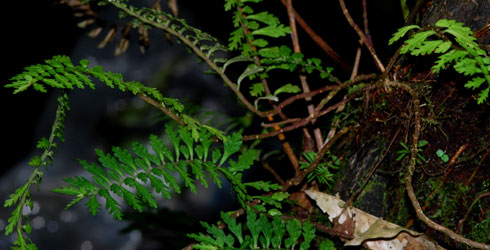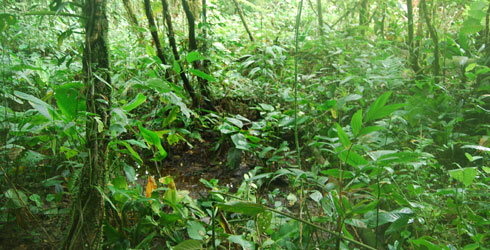Pilea matama
Pilea matama is a perennial herb species that was discovered as part of a Darwin Initiative Project that seeks to explore, inventory and map the Talamanca Mountains in the La Amistad Binational Park, Matama, Costa Rica, where several interesting and new species have been encountered.
The species was formally described by Museum botanist, Alex Monro on December 31, 2009 in the online journal Phytotaxa, and is named after the mountain ridge where it was found.
It grows close to the ground in damp shady areas of forest and produces minute flowers that open explosively as they dry out to release pollen.
Species detail
Pilea matama is only known from the Matama ridge in the Costa Rica portion of the Talamanca Mountains. This area is renowned for the rich diversity of species found there and nowhere else.
-

Taxonomy
Pilea matama is a member of the nettle family, but like many of its relatives, does not sting. Find out more about this recently-identified species.
-

Biology
This perennial herb produces tiny flowers and uses an unusual means of pollination. Find out what Museum scientists discovered when studying this plant’s reproduction and dispersal.
-

References
Get more information on Pilea matama.
Images

Female flowers of Pilea matama.

Male flowers of Pilea matama.

Diagram of Pilea matama.

Habitat of Pilea matama.

Habitat of Pilea matama.

Habitat of Pilea matama.
Author
Dr Alex Monro
Researcher, Tropical Plant Diversity, Department of Botany.
Author's quote
"When I arrived in our camp, two of my colleagues said they had seen what they thought might be a new species of Pilea. I was a little sceptical as this is a poorly studied group and there is not a lot of interest in it within the botanical community.
"When I found some plants growing on the base of a tree I knew immediately that it was a new species and was very excited, especially as this species has very unusual shaped leaves and resembles some other rarely collected species in Veracruz (Mexico), Guatemala and elsewhere in Costa Rica. The locality where it is found is one of the older parts of Central America which have remained above sea-level for at least 16 million years. We have found many interesting plants here."
Toolbox
Glossary
Epiphyte
A plant that grows on another plant, but not parasitically.
Staminodes
A stamen that does not produce pollen.
